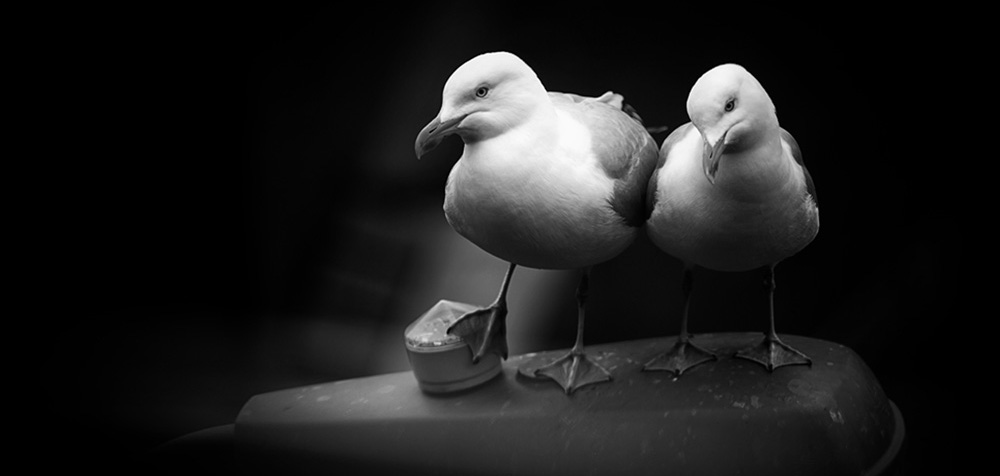Gulls are quite easy to live alongside it turns out – as well as being great adoptive parents! –
Words by Sandra in Seaton, Devon.
We had a top floor flat facing the sea and were surrounded every year by gulls with chicks – to the left, to the right, at the back – probably 10 or 12 pairs. As long as we went up on to our roof terrace every day to establish “our” space in the mating season we lived with them without any problems. We had a pair on the next roof which had a late egg which got addled by intense heat so they had no chicks. Whilst I was out one day I found an abandoned baby gull (I had been watching it for several days and it obviously had no parent and was drinking from a pool of fresh water inside a ladies toilet!). I picked it up in my cardigan, took it home and put it over on the next roof along with a present of a tin of tuna. A couple of days later it was obvious that the pair had adopted it and would look after it. A few days later a neighbour (who didn’t really approve of what I was doing) turned up on my door step with what she said was the gull that I had given to the chickless parents. She thrust it into my hands, said it had been on her roof for several days and it was my responsibility. I took it upstairs and saw that it wasn’t the chick I had put over the roof but another one. It was much smaller. Again, I put it over the roof with a tin of tuna!!! Again, the pair took it on and raised both chicks (one obviously leaving the nest before the other). So, not only are they good parents they make pretty good adoptive parents too! We had absolutely no problems at all surrounded by “our” gulls: they ignored us and we ignored them (except when I spent hours watching them through binoculars. They are beautiful birds and deserve to maintain their presence at the seaside. It would just not be the same without them. As an aside I can tell you quite definitely that if you cull gulls one year (as they did where I live) then the gulls go on to have twice as many chicks the next year. The most I saw that survived was a family of 5 chicks, there was one pair with 4 and several pairs with three. When not culled they had one or two. Smart birds.

